Plant hunting, Crete 5-12 April 2016
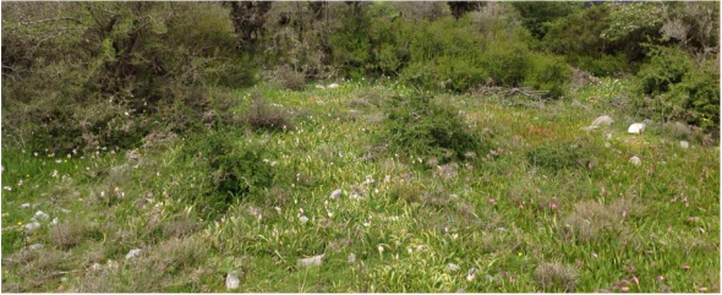
Omalos plain, full of botanical riches – MJ
John Fanagan, a member who lives in Dublin, has written this account of the MPG April 2016 visit to Crete. For more botanical details of the areas visited see also …Crete 2014
5 April
Dinner for 24 MPG members in Plakias was a memorable way to celebrate my birthday: some Irish whiskey helped the joviality before the wine, delicious food and raki arrived. We had met earlier that afternoon in Chania airport and were picked up by our trusty coach driver Manolis, a proud Chanian. There were old friends and new. Heather and Dick Martin, Robert Hazell, Alison Richards, Caroline Bilsby, Chris and Jeanette Brickell and John Fielding had been on previous trips that the Irish contingent – Anne Cooke, David Glen and I – had taken. The others we met for the first time were: Kate Bradley-Hole, Béatrice Castelein and Françoise Salomon from Antwerp, Rachael Dodd and her Great Dixter colleague Susan Quinn, Heather Hibberd and Ilona Kumar from Yelverton, Melvyn Jope, Stephen Jury, Lynne Leveson, Allan Lover, Anne Rendell and Jackie Russell. It was an uncommonly friendly group that took no time at all to bond.
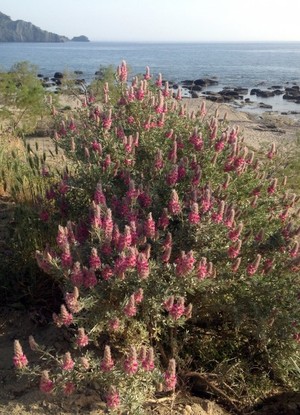
Ebenus cretica – MJ
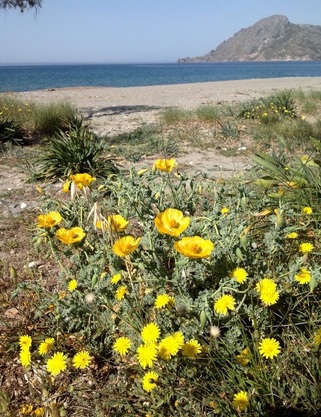
Glaucium flavum – MJ
Before dinner we had a walk along the road by the sea led by John Fielding. As a non-botanist, I was keen to learn a few new plant names and was struck by Ebenus cretica with its deep crimson or purple flowers. The sea looked beautifully clear, but probably too cold to be called inviting. The Hotel Sofia where we were staying was bright and modern and run by a local family, headed by Costas and his son Vangeli. We were lucky with the weather: warm and sunny.
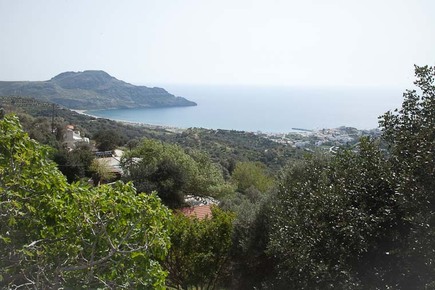
First walk, Plakias – JF
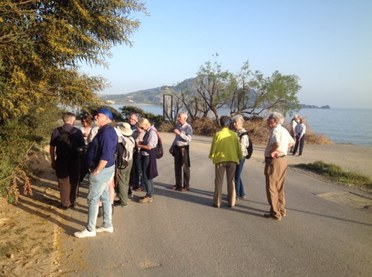
Our group along the seashore – MJ
6 April
Our first full day in Plakias (population c.200) and its environs was in every sense a world away from news and events in the outside world: the Wisconsin primaries, the Panama papers scandal, Ireland trying to elect a government…
Though small, Plakias is a well known centre for plant-lovers and walkers. The visitor season in Crete was really only starting, but the hotel was quite full (breakfast note: the hard-boiled eggs almost impossible to peel). John Fielding was explaining to me how unique plant life is on Crete: about ten per cent of species found here are unique to the island. Because it is at the crossroads of three continents, the range of species is very wide.
After breakfast there was a walk along the beach. Then 20 of the group walked across the ridge to Damnoni. The rest of us met them at our lunch rendezvous, the Hapimag Hotel, a very smart venue which has members, not customers. Lunch, delicious and lengthy, was on the terrace overlooking the sea.
Rachael and Susan slipped off for a swim. The only others I saw in the sea today were two small boys who were paddling as their parents watched. Too cold for most mortals.
After lunch we visited an extraordinary museum in Asomatos full of domestic, military and religious memorabilia, collected by the father of the owner, Giorgos Georgoulakis. It was charming and very peaceful. From there we walked along a dirt track and road to Preveli Bridge, close to the famous monastery which featured prominently in the resistance to German occupation during World War II. Our driver Manolis, watching the river said to me that the winter had been very mild with little snow and they feared drought in the summer: “All that water is pouring into the sea.”
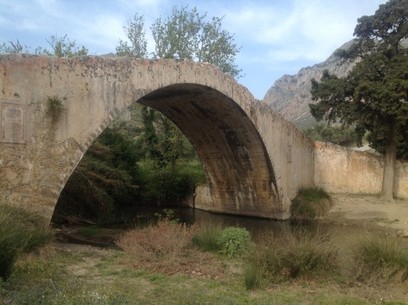
Preveli bridge – MJ
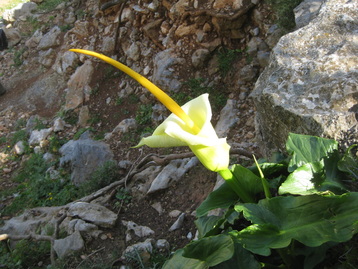
Arum creticum – HH
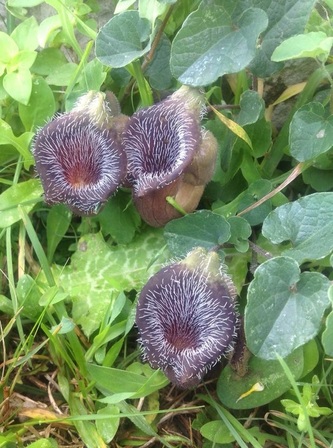
Aristolochia cretica – MJ
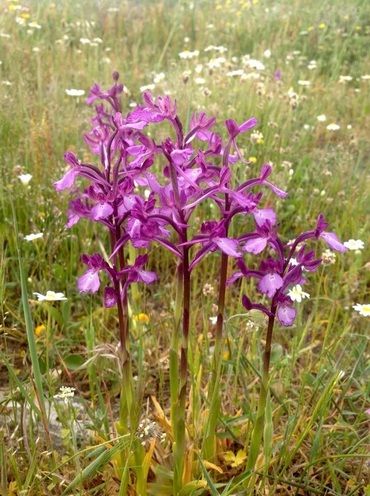
Anacamptis doerfleri – MJ
7 April
We were on our way early for a major (two and a half hours) exploration of Gious Kampos, meaning the plain of Eos, and known to some expatriates in Crete as Spili Bumps. We saw buzzards gliding above the dense vegetation. Spili Bumps was very quiet and still. It was home to a cornucopia of flowers and plants to examine: for example, 10 varieties of orchid in one small area. The highlight for me was a meadow full of poppies and yellow flowers (Sinapis alba). The day was overcast and warm, perfect for walking
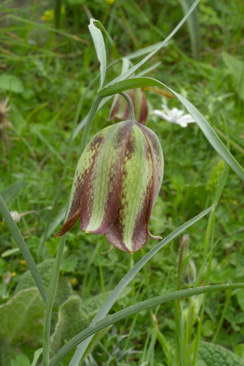
Fritillaria messanensis – MJ
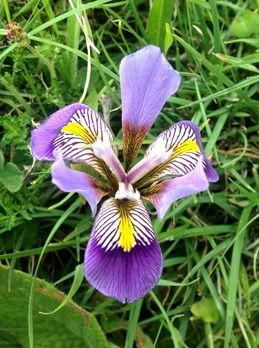
Iris unguicularis ssp cretensis

Himantoglossum robertianum – MJ
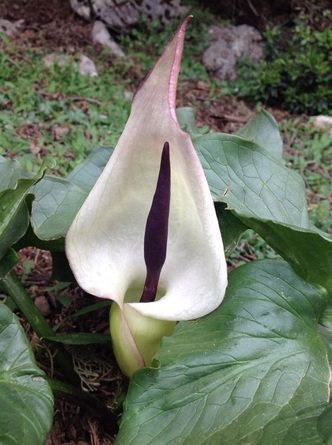
Arum edeum – MJ
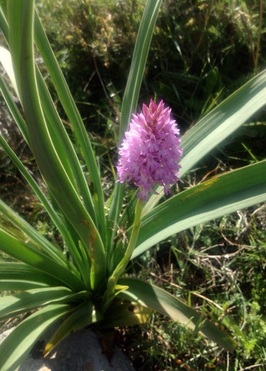
Anacamptis pyramidalis – MJ
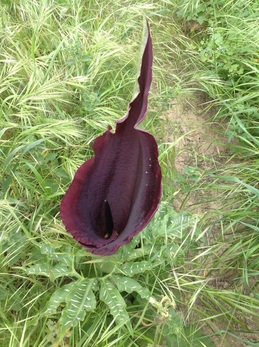
Dranunculus vulgaris MJ
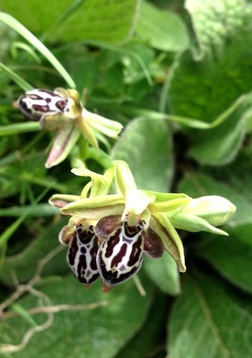
Ophrys cretica ssp Ariadne – MJ
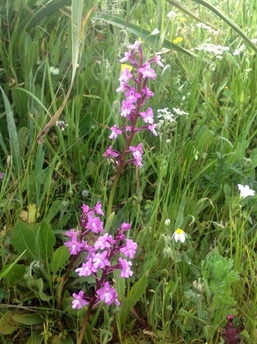
Orchis quadripunctata – MJ
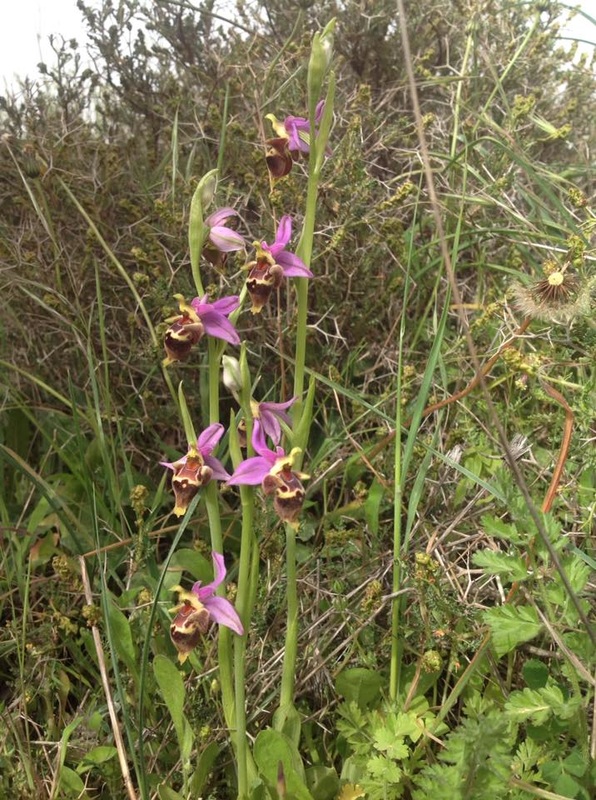
Ophrys scolopax – MJ
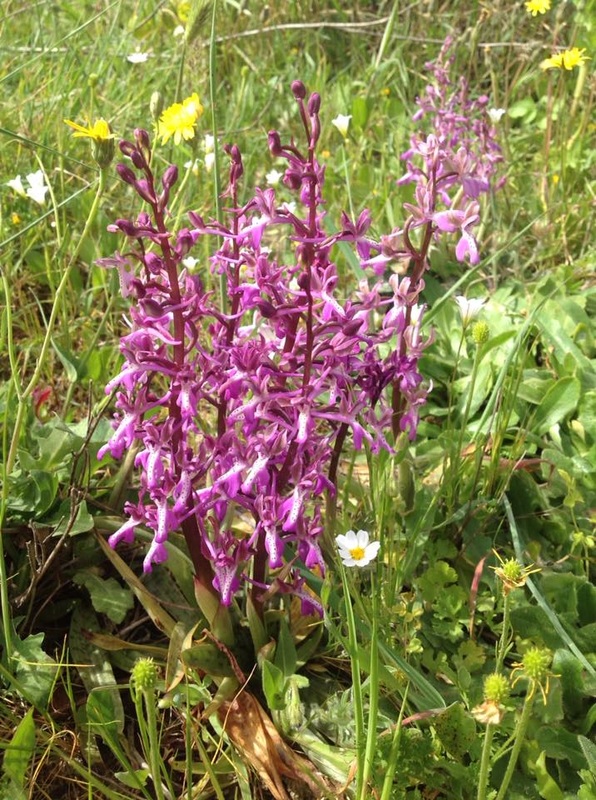
Orchis sitiaca – MJ
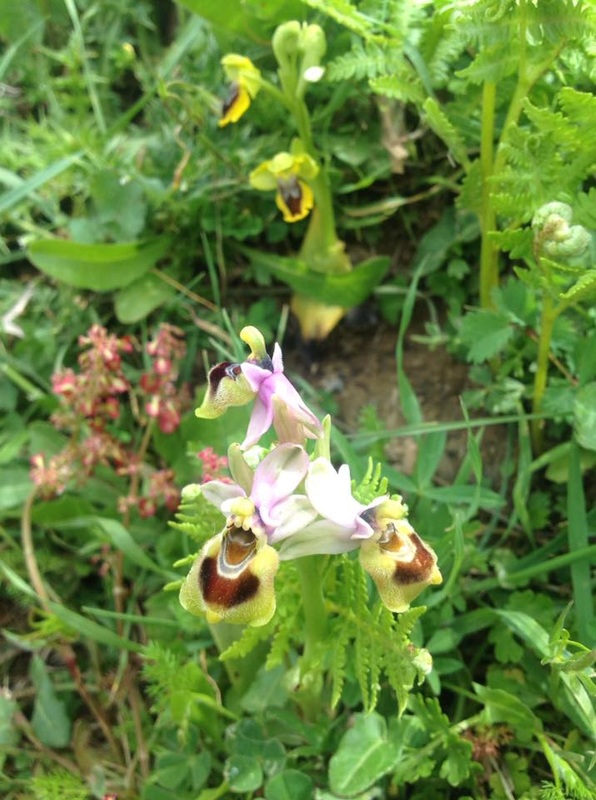
Ophrys tenthrednifera – MJ
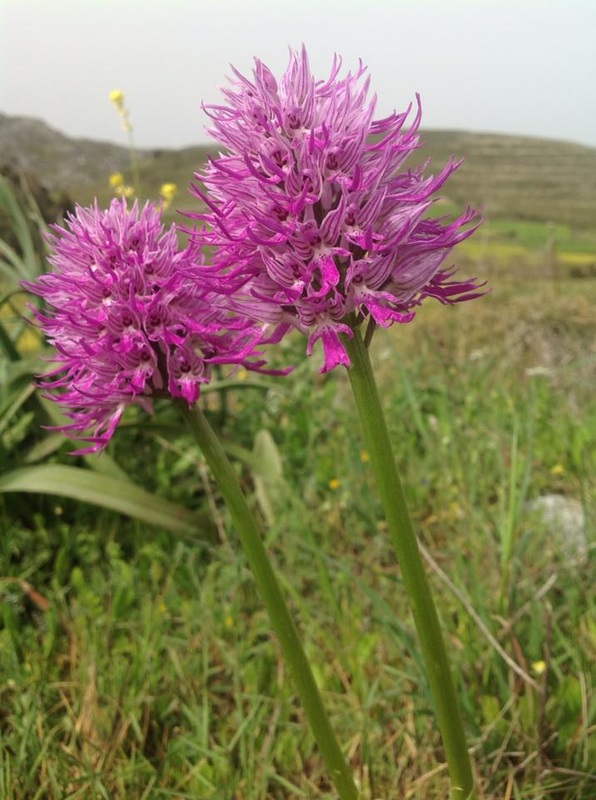
Orchis italic – MJ
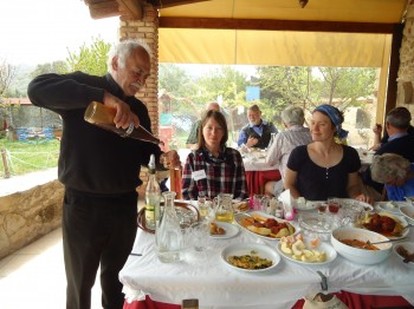
Lampros Papoutsakis, our host – HM
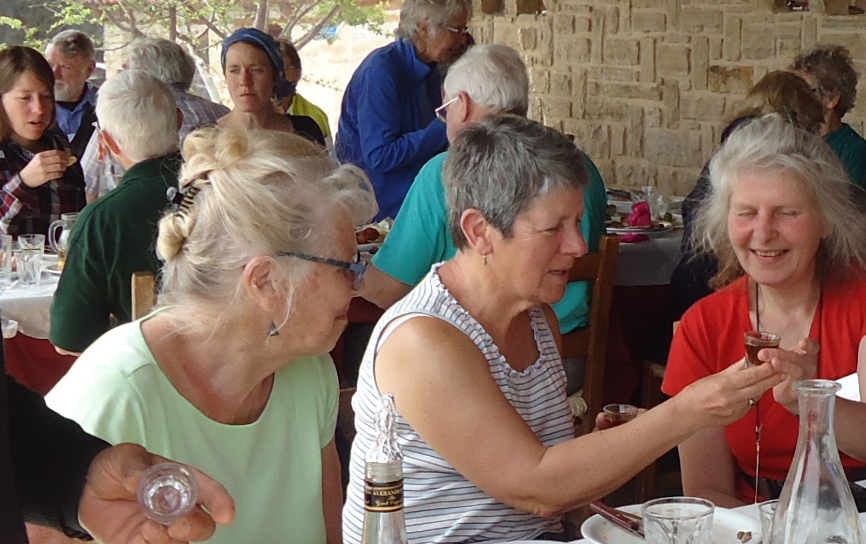
At lunch in Thronos – HM
Lunch in Thronos was quite an experience. Our host Lampros Papoutsakis welcomed us warmly, saying we visitors were the life blood of rural life in Crete (he got some of the blood from us later on by selling his goods at city prices). We were royally fed with produce from his own land: cheese balls, omelettes with greens, meatballs, bean stew, raki with honey… It was hard to leave. I tried to organise a peasants’ revolt to stay there, but was slapped down decisively by Heather.
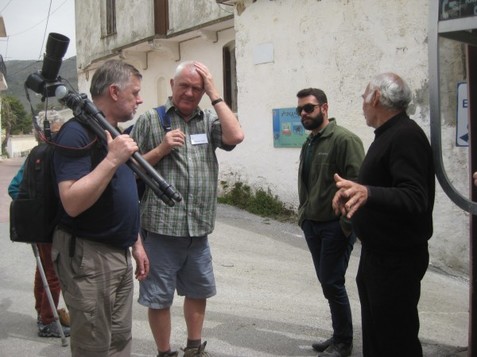
John Fielding, Melvyn Jope, Manolis Pissadakis and Lampros Papoutsakis – HH
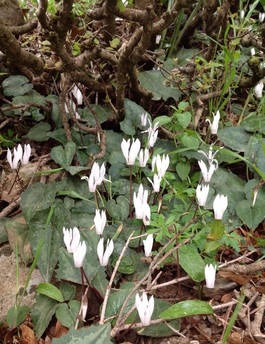
Cyclamen creticum – MJ
fter lunch, we stopped in an area not far from Spili Bumps, but it was not nearly so rich in flora. There were cyclamen to see after a climb, however. By the roadside I watched a farmer watering his newly-planted cherry trees. Manolis told me this is the only part of Crete in which cherries are grown.
Back at the hotel in Plakias, we had a pre-dinner illustrated talk by John Fielding on Crete and its flowers. It was very absorbing, not least the first part which gave a geological perspective on the formation of Europe, including Crete.
Dinner in a local restaurant made me realise that slow service (and here it is very slow) has its advantages: plenty of time to talk and maybe let a few more join the party while quaffing their very palatable beer and local wine.
8 April
I stayed in Aktounda village while the rest of the group walked up to the plateau. It has a winter population of about 50, with three churches, all in use when we were there, and a school which closed in 1969. Now it is used as a lovely village hall where films are shown on Saturday evenings and a library will shortly open. We were shown the hall and the three churches by local resident Maria Porichi whose husband was outside their house whitewashing a wall. The botanical highlight of the tour was an enormous twin-trunked Quercus coccifera by the largest of the churches. There is no shop in the village, but while I was sitting outside the fairly basic taverna, two trucks went up and down the narrow main street announcing their wares: one with potted plants, the other selling oranges and potatoes.
After a picnic lunch sitting outside the taverna, we went to Preveli beach to see the beautiful Phoenix theophrasti: a grove of palm trees endemic to Crete growing in the freshwater inlet leading onto the beach and equalled only by the grove at Vai at the eastern end of the island. This was the seaward end of the river whose water Manolis had lamented running away so fast after the warm winter. Those of us who didn’t go all the way down to the beach sat in the balmy sunshine, enjoying the warm Cretan spring.
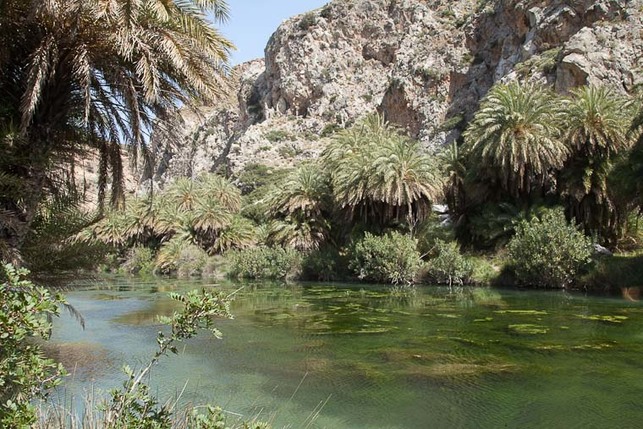
Phoenix theophrasti – JF
9 April
We had a longer walk than expected this morning (even me) when our coach could not get through a small village. We walked on the road from Alones to Kanevos. The horta pickers were out at work. Melvyn got some striking photos of the 90-year-old mother of one of the pickers who was dressed all in black and filling her apron with horta. Then we continued down through the Kotsifos Gorge to Myrthios. John Fielding was excited to discover a white flower he had never encountered before.
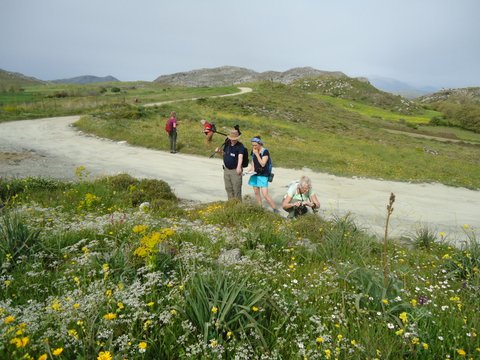
Wild flowers off the road – HM
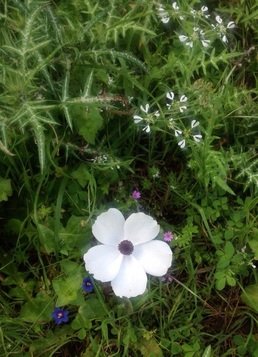
Ranunculus asiaticus – MJ
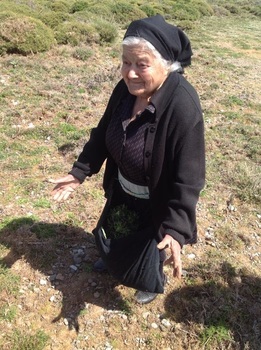
Never too old to pick horta – MJ
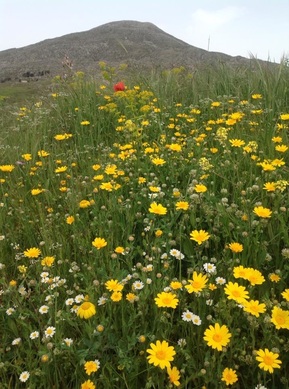
Glebionis segetum MJ
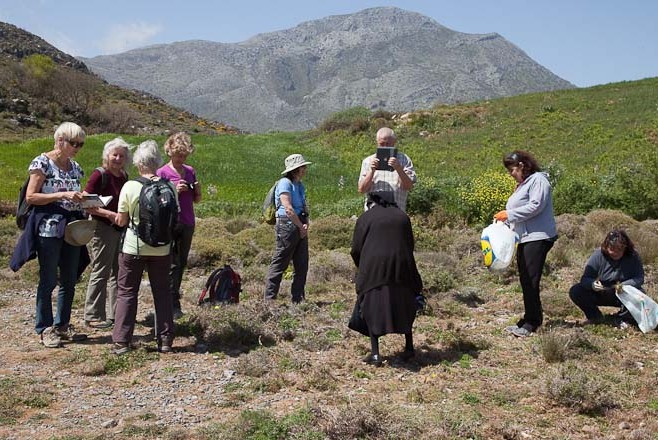
Horta gatherers JF
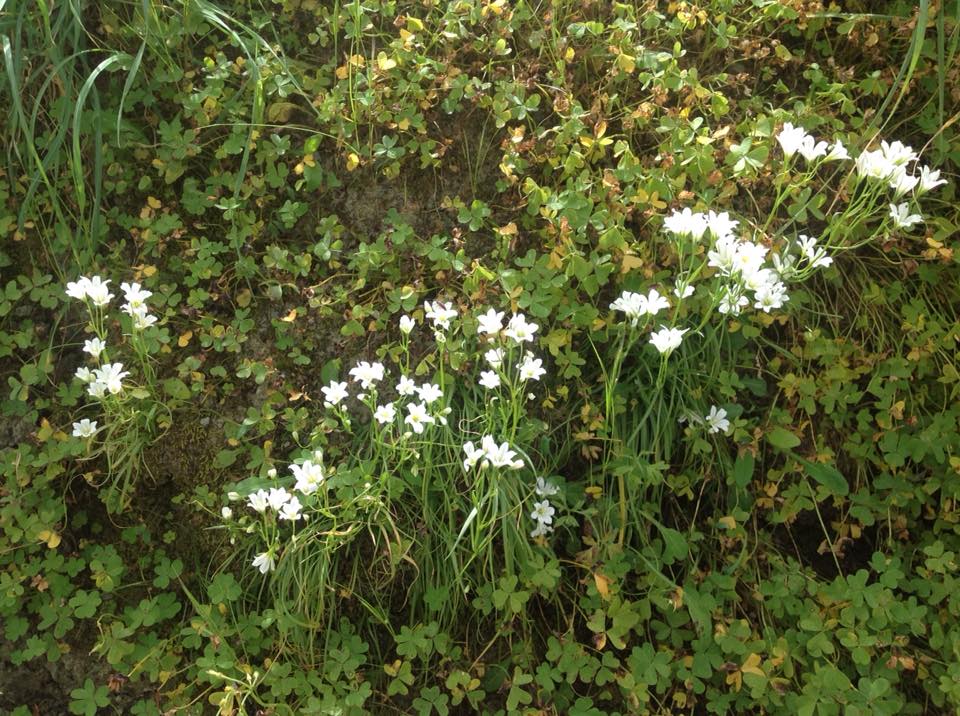
Gagea graeca – MJ
Susan and Rachael left us at lunchtime to take a taxi to Heraklion airport and return to England. The rest of us had a very late and substantial lunch at Myrthios from where we could look down at Plakias. Some walked back from there to the hotel. A group of us who met a few hours later for a pre-dinner drink did not bother moving from the small seaside bar and dined on some crepes. It was our last night in Plakias.
10 April
We left Plakias and the Sofia Hotel early to take the long coach drive to the top of the Imbros Gorge. We were joined at the taverna there by some friends who live in Crete. Of the 28 of us, including the Crete residents, 24 did the long walk down. The other four of us went on to the Komitades Taverna where we were meeting the walkers for lunch. While having a drink in the sun there, we were joined for a while by a local tour guide who spoke excellent English and gave us a passionate lecture on Crete’s history. Earlier, Manolis had quizzed me on the price of olive oil in Ireland; he has a few hundred trees (there are about 50 trees for every person in Crete) and sells the oil. However, the fruit from his oranges trees is not worth selling: he would get only €50 for every 1000 kilos. Instead he gives them away to friends and to groups like us. We received four large 15-kilo sacks to share between us.
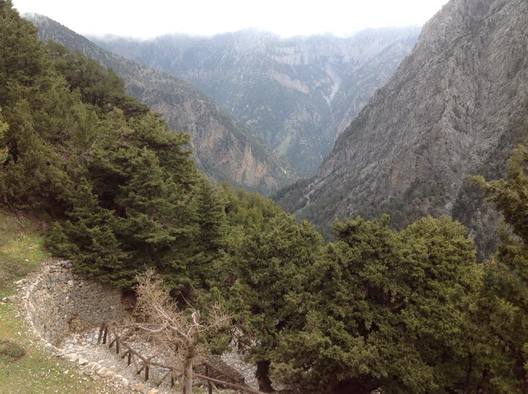
At the top of the gorge – MJ

Ranunculus peltatus on the dewpond on the Omalos plain – JF
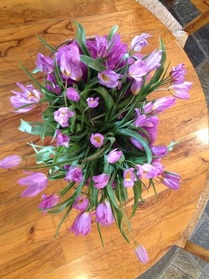
Wild tulips in Neos Omalos Hotel – MJ
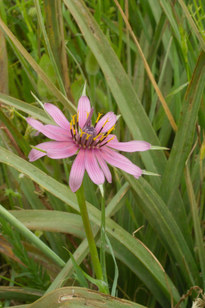
Tragopogon porrifolius – MJ
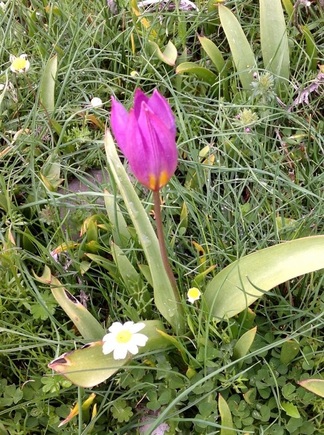
Tulipa bakeri – MJ
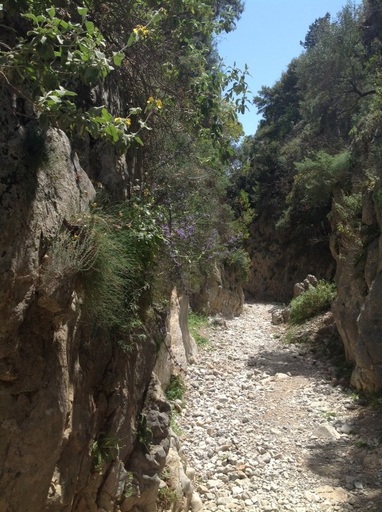
Imbros gorge – MJ
11 April
For the first time on this trip, the weather was bad: cold and damp. On our journey to the top of the Gorge of Samaria, we saw our first collection of about 20 wind turbines on the crest of the ridge; not pretty. Manolis was pretty scathing about them. When we reached the top of the gorge, there was such a freezing wind that very few stayed outside the coach for more than a few minutes. There was still snow to be seen in some of the crevices. We did get to see a lovely Zelkova abelicea whose wood is extremely hard and is used to make shepherds’ crooks.
After lunch there was another long and spectacular drive, first north passing Chania and then climbing south to Omalos which is 1000 metres above sea level, at the edge of the Lefka Ori (White Mountains). At one point on the drive we could see the coasts to the north and south simultaneously. Omalos consists basically of a few hotels and a shop. It is significantly cooler than down at sea level. Our hotel, Neos Omalos was comfortable, with central heating, a huge log fire on one evening, and rather old-fashioned. It was striking to see bowls of wild tulips and orchids on the tables. We all had dinner together there.
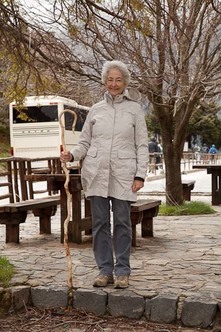
The shepherdess JF
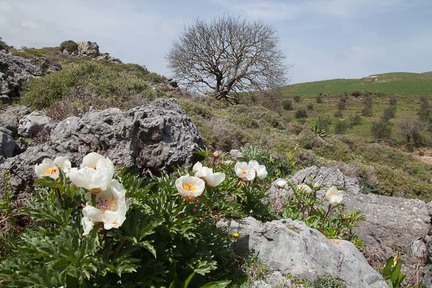
Paeonia clusii – JF
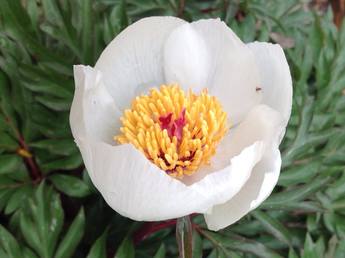
Paeonia clusii – JF
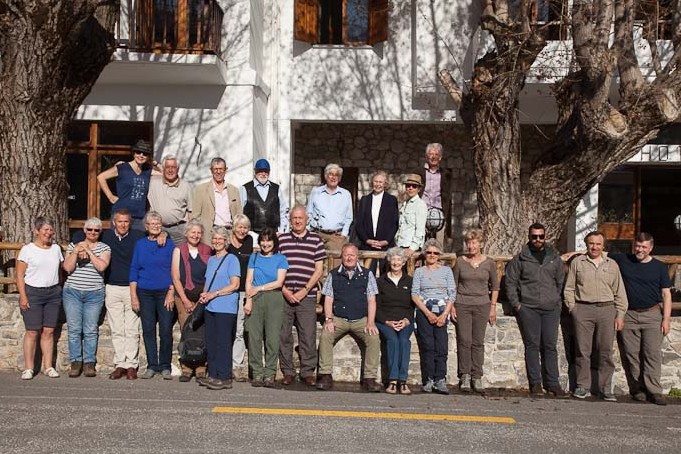
Group outside Neos Omalos hotel – JF
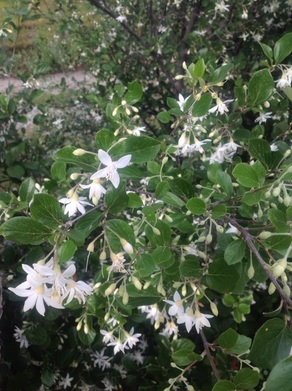
Styrax officinalis – MJ
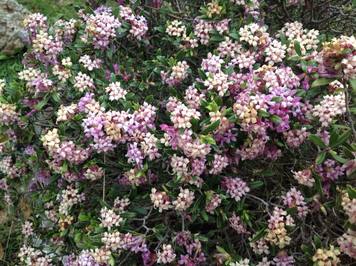
Daphne sericea MJ
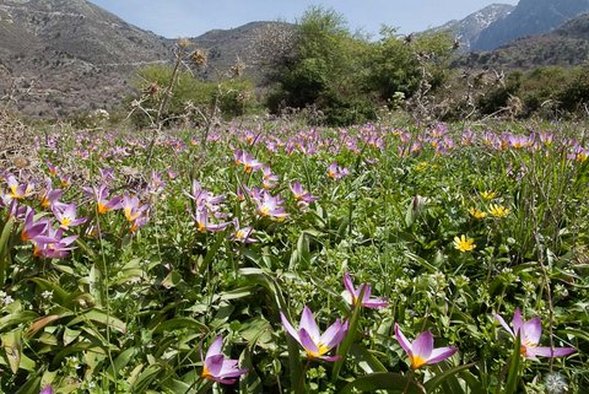
Tulipa saxatilis – JF
We had our picnic lunch back in the warmth of the hotel before moving out on to the plain again. We walked through an enclosed field full of tulips and anemones: they would be gone by the time John’s next group came to Omalos. Plant discovery continued during the afternoon at a dew pond, a cave and a daphne site.
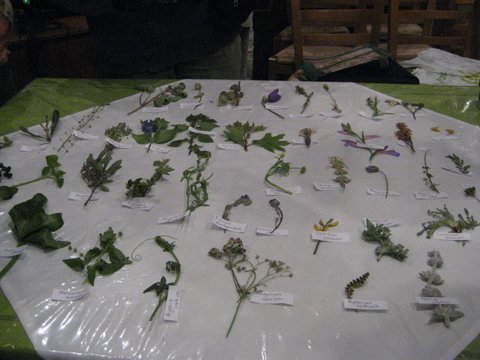
Plant samples – AC
Before our final dinner, John laid out about 30 plant specimens on a table, which he and Chris had collected during the previous days, with labels on the side, for an identification competition.
Huge enthusiasm (like Harrods sale, I thought, with the women rummaging and the men hanging back). I was not the only one who wished we had had more of these specimen shows at intervals during the trip.
Dinner was (quite justifiably) a very jolly affair.
12 April
The lovely weather had returned as we lined up for our school photo outside the hotel. We drove to the outskirts of Chania to the Park for the Preservation of Fauna and Flora, part of the Technical University of Crete. It is an impressive 30-hectare site, obviously underfunded and understaffed.
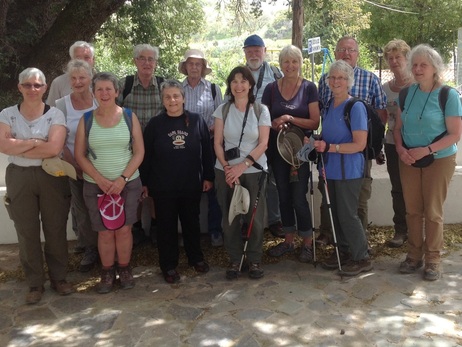
The group with Maria (front row 3rd from the left)
At noon, David Glen, Anne Cooke and I said goodbye to the others as they headed to the airport and we back in to Chania for another day before our return to Ireland.
Trips like this do not run smoothly by accident. Heather Martin was a model organiser. She did not seem to mind that I christened her ‘Bletchley Park’ early on, because I could never easily decipher her instructions on the coach about our options (she even sent me a greeting in Greek yesterday which I benignly interpreted as encouraging, but haven’t a clue). I loved meeting all of the others and chatting with them. Crete is a magical place and I will certainly go back. Thank you, MPG, for all the fun, the knowledge gained and the friends made.
John Fanagan
Copyright © Anne Cooke (AC), © John Fielding (JF), © Heather Hibberd (HH), Melvyn Jope (MJ), © Heather Martin (HM)

